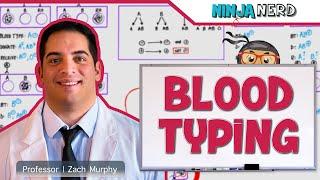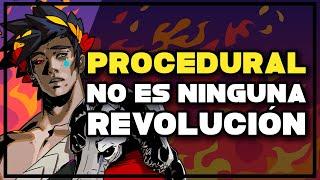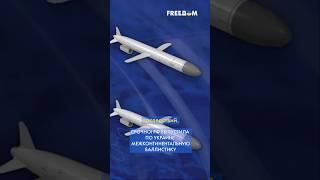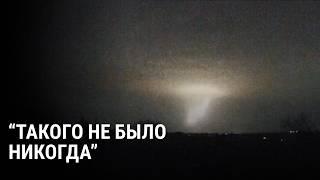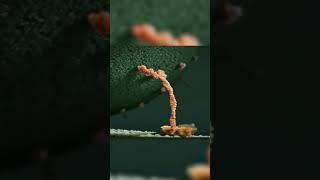Комментарии:

Thank you very much for a very good explanation.
Ответить
Antibody can't bind to another antibody untill it was already binded to any antigen ..then how rhogam can bind to mother's antibody ?
Ответить
Hello. Huge issue with the first problem that you were working out. You told the audience that if a person has A- blood that they have Rh antibodies. NO ONE has Rh antibodies unless they have had an improper blood transfusion or an Rh- mother that had exposure to Rh+ fetal blood during childbirth. I hope that you will redo this, because it is incorrect. Very incorrect. I am steering my students away from this!
Ответить
I will suggest to my med school mates so we can give a percentile of our tuition as support to you Ninja Nerd. Keep up the good work. From Benue State, Nigeria 🇳🇬
Ответить
❤ superb
Ответить
Rh - ve dont have ant D antibodies
Ответить
رحم الله والديك حبيبي
Ответить
Helo ninja sir...
I have question regarding rh incompatibility
Tht if foetus is Rh- and mother is Rh+ then will happen??.

sir can you please make some videos on practical laboratory measurements like neubaur counting chamber...thanks 🙏
Ответить
Very good lecture for beginner Medical Laboratory Science majors. I would also recommend Blood Bank guy for more in-depth discussions in blood banking, especially about other blood groups. There are a lot more surface antigens that MLS majors need to know. But Ninja Nerd's lectures have been so useful for me when I was a student (just graduated a few months ago).
Ответить
You have done a lot to medical world.
Ответить
Hi! You don’t make antibodies to the Rh antigen until you’re exposed to Rh+ cells through pregnancy or transfusion. If the mother is Rh+ the Rh antigen is seen as “self”. She won’t make Rh antibody because she would then destroy her own antigens/RBCs. If Mom’s Rh- there is potential for the father, thus the child, to be Rh+ and then her body will make Rh antibodies if she’s exposed to the baby’s Rh+ cells. Rhogam is given based on the mothers Rh- status as a preventative regardless of dad and baby’s Rh type. If Dad and baby are negative Mom won’t be sensitized to make antibodies anyway. If Mom were to make an antibody it would happen around 28 weeks, so Moms receive the shot at 28 weeks and after perinatal procedures or delivery when there is potential for fetal maternal hemorrhage (blood mixing). Also want to clarify what RhoGAM does. It’s not an antibody to an antibody. The purpose of it is to fool Mom’s immune system. The anti-G/anti-Rh/Rhogam coats any fetal cells that enter in the mother’s circulation that are Rh+ so she doesn’t “see” them and make her own antibody against them.
Ответить
I also saw some confusion about ABO antigens on red cells and antibodies produced. The RBC (red blood cells) and plasma are separated into packed red blood cells and serum (separated further to fresh frozen plasma, cryoprecipitate, platelets, and specific coagulation factors). So if you give O (no A or B antigens) packed red blood cells to an AB person, the anti-A and anti-B in the transfused O blood will be absent because they wash the cells of the antibodies. Whole blood is rarely transfused for that very reason. Otherwise you would truly only be able to give the exact same type. Packed red blood cells allow more transfusion type options. It’s easier to conceptualize if you only think of the antigens when determining transfusion type. Don’t give someone antigens they don’t already have. I can give type A or B to an AB recipient because they have those antigens already. It makes for more options rather than finding a rarer AB donor for the recipient. That’s why O is universal donor. No antigens on the donor cells means you aren’t giving the recipient any antigens to respond to.
Ответить
Can someone explain... First he says that the person doesn't have Rh antigen have Rh antibody but later he said mother doesn't have RH antigen and doesn't have RH antibody too????? What ¿¿¿ Pls clear my confusion anyone I have my exam tomorrow
Ответить
I used to hate school and had no idea what the teachers were talking about until I met your videos . I watched most of your videos and I’m glad to say that I’ve been getting As because of you. Thank you soooooo much. You’re a Godsent
Ответить
Thank you for teaching me❤
Ответить
Abs quite selfish 😂😂😂😂
Ответить
I'm o negitive... jackdlesquaad 😅😅😂
Ответить
how can (A-) donate ro (AB)
when (A-) has the anti (B) antibodies?

Your name is Zach Murphy. Do you have any relation with Sean Murphy in the good doctor series 😂
Ответить
I am so thankful to have come across your videos for my anatomy and physiology class. I have shared your videos in our group discussions as well.
Ответить
You simplified the blood type lecture in a very simple and easy-to-understand manner. By the way, I enjoy listening to all your lectures.
Ответить
im so confused because in the blood smear diagrams, you mentioned that if you're Rh negative, you have anti D antibodies. Why is it different for exposing the mothers cells to Rh+ blood? Surely she'd already have the Rh antibodies?
Ответить
thx from middle east ❤
Ответить
Great
Ответить
Thankyou sir for saving my med career 😭😭
Ответить
Definitely sharing this lesson in class tomorrow 👏🏼🙌🏼
Ответить
I highly enjoyed this video. Very easy to visualize and understand after this. Thank you!
Ответить
Thank you, Ninja Nerd, for posting this fantastic video. You are a gift to this generation!!!👏👏👏
Ответить
you are blessing for everyone
Ответить
Nice sir ❤❤🎉🎉
Ответить
Made sm sense tysm
Ответить
THANK YOU SO SOOOO MUCH
YOU SAVED MY LIFE!!!!

U r great ,but u should know that there is no rh antibody normally ❤
Ответить
Thank you very much doctor ❤
Ответить
Top notch explanation! Bravo!
Ответить
AB+ is spoiled and O- is selfless lol
Ответить
I don’t get how O is universal donor. It has A antibodies and B and Rh so when it’s given to a patient, the patient has antigens so would it not cause agglutination
Ответить
Thanks Nerd... You make my presentation one of the best.. I hope to meet you one day
Ответить
Important note:
When considering blood transfusions, it is important to distinguish between red blood cells (RBCs) and plasma. Plasma transfusions contain antibodies. If whole blood (or plasma) is being transfused from an O type donor, it can only be donated to O type recipients because O type individuals have anti-A and anti-B antibodies in their plasma.
In most blood transfusions, only the red blood cells are transfused, which is why O type is considered the universal donor for red blood cells. O type red blood cells lack A and B antigens, making them safe for all recipients.
Similarly, plasma from an AB individual lacks anti-A and anti-B antibodies. Therefore, it can be donated to recipients of all blood types, making AB individuals the universal plasma donors.
:)

This guy is too good 😮.
Glad to watch you videos

You’re carrying me through anesthesia school, my friend.
Ответить
I have O-
Ответить
Cute Nerd! Thanks for helping me with my A&P class 😊
Ответить
Thank you sir! I've learned a lot 🥰
Ответить
Aight ninja nerds! In this video we’re gonna talk about …
Ответить
Nice 👍
Ответить
Please where I can this diagram as pdf 🙏🏻!
Ответить
Most of the people that commented 7 years ago were in the med school, I think they are all doctors now with help of Ninja nerd!
Ответить
